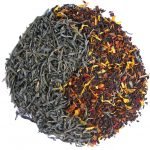Joseph Kellerstein, DC, ND
Roberta first presented in October ‘09. Now it is bad form to present cases prior to the one-year mark, however I was so struck by this case and its possible outcomes that I opted to share it with you as it were “on the fly.”
Roberta is a very petite and attractive 27-year-old woman. Her features are notably fine and angular. She sits in the chair opposite me confidently and with good posture. Her arms are tightly folded over the chest, making me wonder who exactly is in charge here.
She teaches musicians about the theory of music and is as passionate about her subject as she is confident in her skills.
Her words were terse and precisely expressed, without any hesitation.
The feelings I responded with inside were that I had better respect her words and phrase mine carefully.
Complaints
- Pre-menstrual dysmorphic disorder
- Acne
- General mood – depression which was occurring on a daily basis
- Past Medical History
- chicken pox
- cold sores
- depression
- tonsillar stones – removed by surgery
Case
Roberta complains emphatically “I am moody, I am so moody. If something has stressed and I do not have to act (meaning work or be social), I can withdraw into myself and think about the things that bother me.
“I do not get mean, but I feel sadness, frustration and confusion. There will be a repeated conversation in my head going on. What does that comment really mean? How does that person really feel?
“I become haunted. Just want to find some peace.”
This description is a good one for the interior state, but it is incomplete in the sense that we are not sure of the triggering context. So I asked what especially would set off the desire to go inside these days.
Roberta was involved with a man. The relationship is very passionate (she describes her involvement in life generally as passionate). The difficulty is that he is married and has not yet made the decision to separate. This is not the first such situation and she has been very much hurt in the past.
She sees this whole situation of being in limbo as being terribly unfair. “I would never do such a thing to someone. If I loved them, I would decide.”
It is such “frustrating episodes” that causes stress and give her that desire to go inside and brood over the meaning of this.
The only real peace she can get in these times is being alone in her own house.
PMS
This phase lasts for 4 days premenstrually and is relieved within 1 day of the onset of flow.
Suddenly there is overwhelming agitation. There is absolutely no patience. Controlling this is very difficult. She can be mean for no apparent reason. “It’s really not me.”
General Case
- Chilly (moderate).
- Oily skin on the face.
- Mildly craves chocolate
- “I like deep connection to others.”
- “I cannot partake of small talk socially. If there is no discussion of substance, I am not shy to withdraw.”
- “I reach my own conclusions.”
- When happy or sad you will know it.
- No real phobias, but the dots on the underside of flowers or the little air pockets in stones anger her.
On speaking of the relationships in her life we got around to discussing her mother. It was striking for me that she said her mother constantly sighs and moans. This really drives her crazy. Interestingly, as she said this she was sighing!
It seemed to me that the sighing closed the deal. As I was about to give Roberta the prescription, she informed me of an interesting occurrence. There were visits to a homeopath before me.
That practitioner had given Staphysagria to our patient with no net result. However, the fascinating aspect is that she would definitely react to the remedy with a kind of compulsive behavior.
First, she would go home and have to put everything in order. There was a strong internal need to keep moving. Lastly, she would get a headache that made her feel for no definable reason that she had been poisoned!
Wow! A beautiful Arsenicum picture just waiting to be picked. Was this just in the nature of an overreaction to the Staph? Was it symptoms of the chronic remedy actually indicated?
In practice I often find that after giving a remedy to which the patient is sensitive, but not sufficiently to provoke a curative reaction, the vitality does indeed try to point our nose in the right direction.
In the end I felt more certain about the appropriateness of Ignatia over Arsenicum and so prescribed a single dose. The patient was to return in 2 weeks.
Roberta only returned for her first follow-up towards the end of February this year.

Follow-Up
“Everything this month has been better! My emotions while premenstrual were nonexistent! I am a different person. I did have opportunities to lose my mind, but it did not happen. The thoughts do not occupy me so I can accomplish anything I set out to do. I do not become useless and furious for days. I am not miserable for no reason. Chilliness is the same. Oily skin is the same. I want coffee – this has never happened. Now that first day I did have that poisoned head feeling again.”
Plan
One dose of the Ignatia 200 to go. (Consider Natrum mur) and return in 2 months.
 Joe Kellerstein, DC, ND Joe Kellerstein, DC, ND graduated as a chiropractor in 1980 and as an ND in 1984. He graduated with a specialty in homeopathy from the Canadian Academy for Homeopathy, and subsequently lectured there for two years. He also lectured in homeopathy for several years at CCNM; for eight years at the Toronto School of Homeopathic Medicine; and for two years at the British Institute for Homeopathy. Dr. Kellerstein’s mission is the exploration of natural medicine in a holistic context, especially homeopathy and facilitating the experience of healing in clients. Dr. Kellerstein is presently teaching a post-grad course in Hahnemannian prescribing with Dr. Andre Saine. Its mission is to promote excellence in the basics of homeopathic prescribing; case taking; repertory; Organon as applied to real-life practice; and case analysis skills via modeling the masters. The course runs for three years; distance learning is available. Students can preceptor in Dr. Kellerstein’s clinic, and mentoring is available.
Joe Kellerstein, DC, ND Joe Kellerstein, DC, ND graduated as a chiropractor in 1980 and as an ND in 1984. He graduated with a specialty in homeopathy from the Canadian Academy for Homeopathy, and subsequently lectured there for two years. He also lectured in homeopathy for several years at CCNM; for eight years at the Toronto School of Homeopathic Medicine; and for two years at the British Institute for Homeopathy. Dr. Kellerstein’s mission is the exploration of natural medicine in a holistic context, especially homeopathy and facilitating the experience of healing in clients. Dr. Kellerstein is presently teaching a post-grad course in Hahnemannian prescribing with Dr. Andre Saine. Its mission is to promote excellence in the basics of homeopathic prescribing; case taking; repertory; Organon as applied to real-life practice; and case analysis skills via modeling the masters. The course runs for three years; distance learning is available. Students can preceptor in Dr. Kellerstein’s clinic, and mentoring is available.





